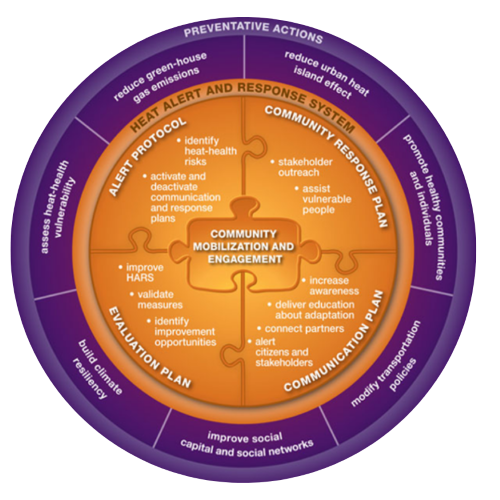ClimateData.ca: Understanding the future of extreme heat in Canada
Understanding how the climate is expected to change is critical for making decisions for reducing future impacts. For extreme heat impacts, understanding future temperature trends can aid decision-makers in developing locally relevant adaptation actions that will reduce the risks of extreme heat on public health. ClimateData.ca’s Health Sector Module contains various data products, case studies, links, and tools that can help decision-makers as they look to reduce heat-related health risks.
Analyze Climate Data
ClimateData.ca’s Analyze Tool allows decision makers to calculate a wide range of climate indices using custom climate threshold values, such as the number of days per year where the maximum temperature exceeds 40°C. This is an example of a context-specific limit beyond which potential impacts, including increased illness, disease, emergency room visits, mortality, or damage to critical health infrastructure may result.
Spatial Analogues Tool
The Spatial Analogues app is one of ClimateData.ca’s newest and most powerful tools. It provides a novel way of visualizing future climate changes by allowing users to envision and prepare for their city’s future climate by exploring cities that are already experiencing similar climatic conditions. Looking to Québec City as an example, as the climate warms, the city is expected to experience considerable climatic changes—from more frequent and intense heat to shifting precipitation patterns.
Designing Future-Ready Buildings
Typically, the design of buildings, including key health-related infrastructure such as hospitals, relies on climate data from historical records. However, we now know that the past is no longer a good indication of the future when it comes to climate. To increase the resiliency of our health systems, designing health-related infrastructure using future climate data may be the best approach. ClimateData.ca has a Learning Zone Module dedicated to sharing different kinds of future climate data specifically tailored to the planning and design of Canadian buildings. The Module includes:
- Building Climate Zones projections
- A building’s thermal performance requirements are determined by the climate in which the building is situated. This climate can be described by Climate Zones. The projected shifts in Building Climate Zones due to climate change provide a high-level understanding of changing energy consumption patterns in buildings, highlighting that reliance on historical climate data alone for design is no longer sufficient.
- Future weather files
- Historical weather files are commonly used by building designers, engineers, and energy modelers for evaluating the performance of building designs. Incorporating future climate data into these weather files can allow these professionals to consider future climate while continuing to use typical building performance simulations. Guidance for using future weather files is also available.
- Future Building Design Value Summaries
- The Future Building Design Value Summaries offer a curated set of climate design values tailored for over 660 locations across Canada. These summaries include essential data such as driving wind, rain pressure, design snow loads, and hot day design temperatures, among others. Presented in a user-friendly format, the summaries integrate advisory guidance on the application of these values, helping building professionals navigate the complexities of future climate data. The data are categorized by levels of global warming, aligning with forthcoming standards and codes.
 Source:
Source: 







